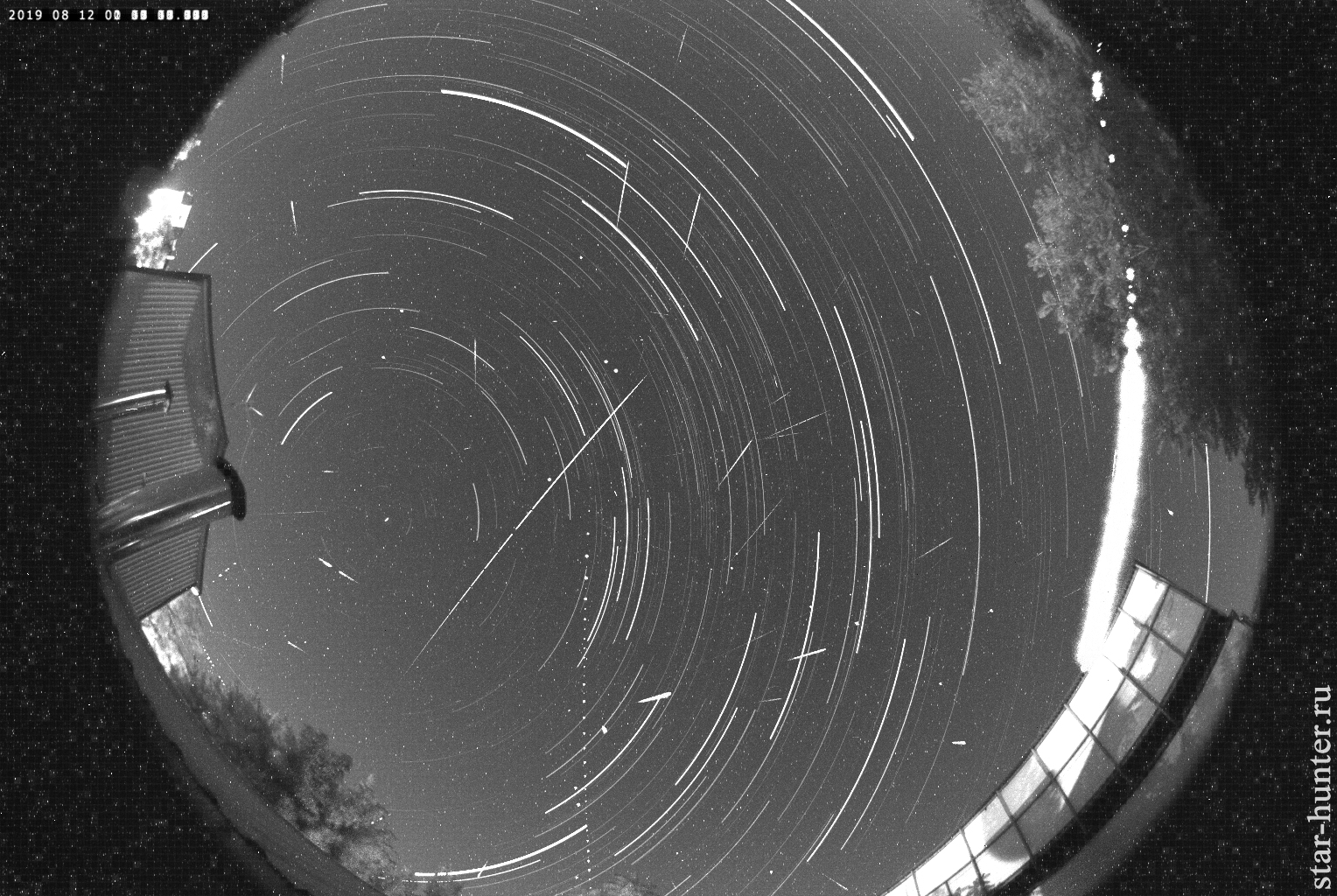Perseids are perhaps the most famous meteor shower. It is active from July 17 to August 24, its peak falls on August 12. The material for the flow is tiny particles of the Swift-Tuttle comet. Perseids are distinguished by high brightness, speed and multiplicity. Under favorable conditions, from 50 to 120 meteors can be counted per hour of observation. Fireballs belonging to this meteor shower are frequent.This year I decided to photograph meteors through the QHY5III178m monochrome camera with a 2.5mm f1.2 wide-angle CCTV lens. This bundle provides an almost 180-degree view of the sky, excellent sharpness and good penetration.

Equipment:
-cctv lens2.5 мм f1.2.
-camera QHY5III178m (bin2 mode, 1528х1024@10fps, 100 ms)
–tripod Q999.
Stacking 65000 frames at StarStax.
Location: Russia, Anapa, backyard.
In previous years, I recorded videos in an uncompressed format, because of which an hour of video could take several tens of gigabytes. However, it turned out that Firecapture can record JPEG files. This significantly reduced the size of the files, and their quality is quite sufficient for detecting and detecting meteors.
After I captured about 74,000 frames in 2 hours, I somehow lost the desire to look at them all in search of meteors, since this is a very long and tedious task. I began to look for a program for adding frames so that stars would be obtained by tracks, and traces of meteors would remain in the picture. Sequator, alas, throws an error and closes. But StarStax perfectly put together frames and left meteors.